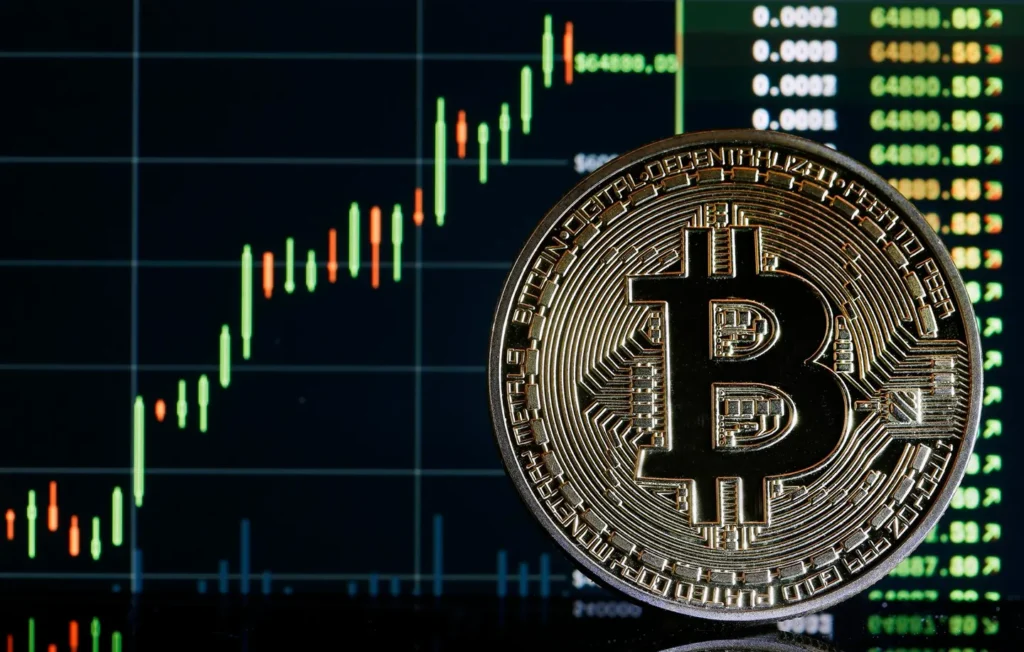Bitcoin has gone from a little-known digital currency to a popular asset class in ten years. Bitcoin’s originality, volatility, and institutional use have raised questions about its value. One of Bitcoin’s biggest turning points would be $100,000. The cryptocurrency has surpassed several price limits, but reaching $100,000 would impact its validity, public image, and position in international markets. How will Bitcoin reach and hold this level? Bitcoin’s rise to $100K will depend on market dynamics, regulations, and policies.
Regulation’s Impact on Bitcoin
Government regulation and policymaking have major influences on Bitcoin’s price. Bitcoin and other cryptocurrency policies vary globally. Bitcoin is legal tender in El Salvador, while China has strict crypto restrictions and bans. The regulatory climate will continue to influence Bitcoin’s pricing.Regulation must be clear and consistent for Bitcoin to reach $100,000. Major economies like the US, EU, and Japan may alleviate institutional investor uncertainty by adopting clear and.
Open Bitcoin usage and taxation policies. In contrast, rigorous AML and KYC requirements could impede innovation and drive firms away from the Bitcoin ecosystem. Global regulators’ Bitcoin attitude may affect market sentiment. If regulators embrace Bitcoin via ETFs, tax-friendly policies, or good legal frameworks, institutional investment may rise, pushing the price up. National CBDC policies may also affect Bitcoin’s price. CBDCs may compete with decentralized cryptocurrencies, but their interaction may boost Bitcoin demand, especially as a store of value in unstable currencies.
Institutional Adoption and Bitcoin’s Growth
Institutional acceptance is key to Bitcoin’s $100K potential. Hedge funds, asset managers, public companies, and nation-states have invested in Bitcoin. This legitimizes Bitcoin as an asset class and boosts market liquidity. Bitcoin prices may grow as institutions invest. Financial institutions are studying Bitcoin as an inflation hedge and gold-like store of value. MicroStrategy and Tesla added Bitcoin.

Their balance sheets show wider reserve asset adoption. More large corporations, sovereign wealth funds, and pension funds investing in Bitcoin might push it past $100K.Institutional interest may propel Bitcoin futures, options, and ETFs. The items would make Bitcoin easier to purchase for individuals wary of direct ownership. Infrastructure improvements would boost Bitcoin’s liquidity and price stability, attracting institutional investors and increasing its value.
Tech Innovations Driving Bitcoin’s Growth
Bitcoin network technology may potentially drive price increases. Bitcoin’s Path to $100K blockchain technology is secure, but scalability and transaction speed are issues. Bitcoin’s user experience could be improved by layer-2 protocols like the Lightning Network, speeding up transactions and lowering costs. Bitcoin would grow more appealing to regular people and businesses as its efficiency and scalability improve, making it a more useful worldwide medium of trade. Recent advances in Bitcoin.
Mining technology, such as the utilization of renewable energy, may alleviate critics’ concerns about its environmental impact. Halving events, which lower miners’ block rewards every four years, will also affect Bitcoin’s supply dynamics. Supply and demand may raise Bitcoin’s price as its supply decreases, especially if demand remains high. The next halving event in 2024 could be critical to Bitcoin’s trip to $100K because it would tighten supply and raise prices.
Economic Factors Driving Bitcoin’s Rise
Inflation, currency devaluation, and global upheaval might push beyond Bitcoin’s Path to $100K . Cryptocurrencies are considered “safe haven” assets during economic turmoil. Investors may buy Bitcoin as a store of value if fiat currencies face inflation or economic crises, driving up its price. In the wake of the COVID-19 epidemic, central banks printed massive sums of money, raising inflation concerns. A 21 million-coin supply makes.

Bitcoin is an intriguing alternative to fiat money during such times. Bitcoin may rise if economic uncertainty erodes global trust in established banking systems, making it a reliable repository of wealth. Bitcoin has also proven its utility as a store of value in hyperinflation and political instability countries has grown in Venezuela, Zimbabwe, and Turkey due to currency weakness. If more countries face similar issues, Bitcoin’s worldwide demand may rise.
Shaping Bitcoin’s $100K Future
Policies, technology developments, macroeconomic factors, and speculative trading are all intricately linked to Bitcoin’s path to $100,000. If Bitcoin were to be embraced by more institutions and the regulatory climate were to improve, its value would certainly soar. Similarly, Bitcoin’s position as a global store of wealth might be further cemented by technology breakthroughs and global economic upheaval. The price of Bitcoin, however, is not immune.
To threats like government intervention, technical failures, or market bubbles. No one knows what the future holds for Bitcoin, but one thing is certain: the way governments, markets, and technology change in the next years will have a significant impact on its potential to reach $100,000. When all of these stars align, Bitcoin might become more than just a $100,000 investment; it might become an integral part of the international monetary system.
Summary
Bitcoin’s journey toward a potential $100,000 price point rests on various circumstances, including government regulation, institutional adoption, technological progress, and global economic conditions. Governments have a vital role by either establishing an environment of transparency and support or placing restrictions that could inhibit growth. Favorable regulatory measures in key economies would offer institutional investors with the certainty needed to drive demand and, subsequently, push the price upward.
Institutional adoption is vital because hedge funds, publicly traded companies, and sovereign wealth funds boost Bitcoin’s legitimacy and market liquidity. Scalability and transaction speed improvements make Bitcoin more feasible for daily use. Finally, macroeconomic factors like inflation or currency devaluation may boost Bitcoin’s value store appeal. These factors will decide Bitcoin’s trajectory and $100,000 goal.


